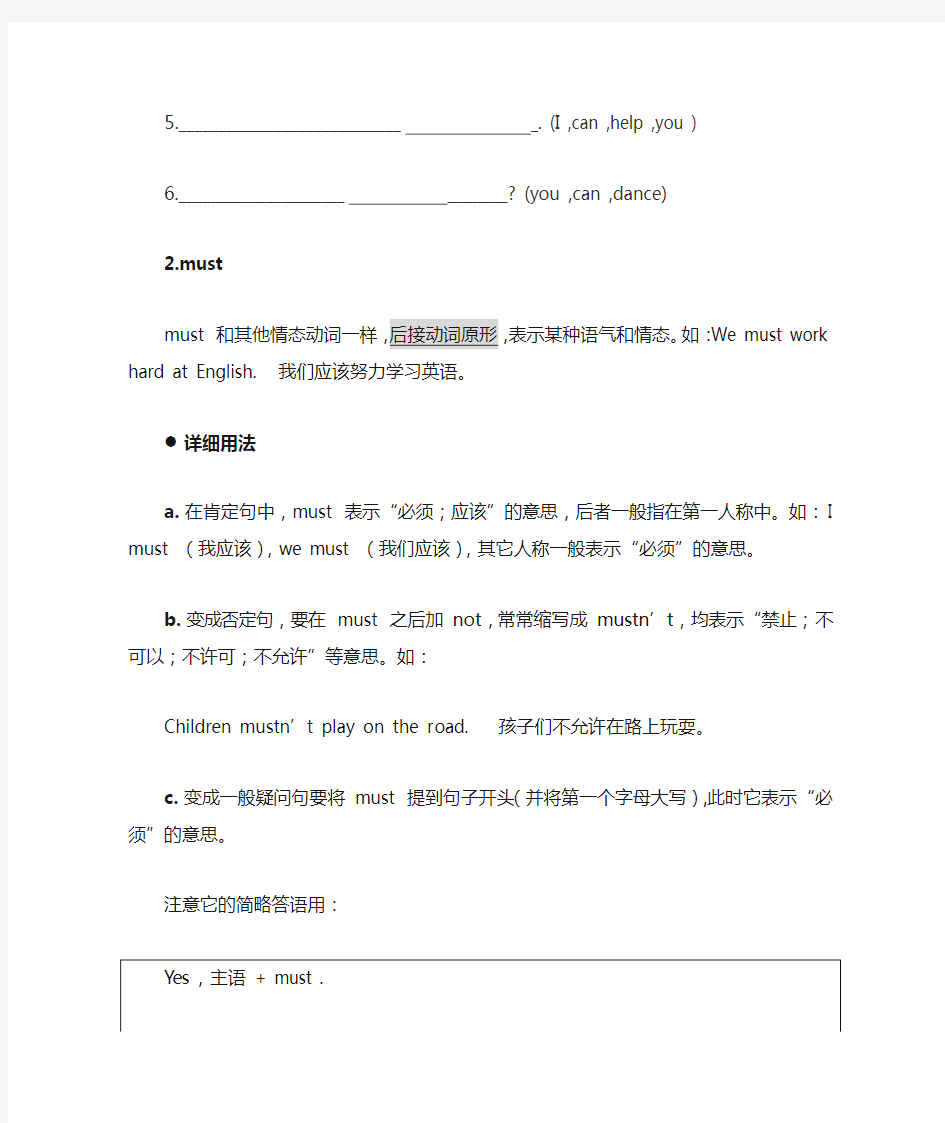

小学情态动词
(先讲三个can,must,may)
1.can
can表示“能够”, “会”, “能力”后面要跟着表示动作的动词。没有时态和人称的变化。后接动词原形。表示不能做什么的时候,后面加上not为can not,或者缩写为can’t。问别人“能…吗?”要把can 放在句子前面,首字母要大写,句尾别忘加上问号。
例句I can swing .She can jump. He can play .
I can’t sing. You can’t see.
Can you hear a dog?Can he hear a bus?练习
2.must
must We must work hard at English.
详细用法
a.在肯定句中,must 表示“必须;应该”的意思,后者一般指在第一人称中。如:I must (我应该),we must (我们应该),其它人称一般表示“必须”的意思。
b.变成否定句,要在must 之后加not,常常缩写成mustn’t,均表示“禁止;不可以;不许可;不允许”等意思。如:
Children mustn’t play on the road.孩子们不允许在路上玩耍。
c.变成一般疑问句要将must 提到句子开头(并将第一个字母大写),此时它表示“必须”的意思。
— Yes,you must. 是的,你必须回家。(— No,you needn’t. 不,你不必。)
d. must 还可以表示肯定的、较为有把握的推测,意为“一定;肯定”等。如:
The door is open. He must be at home.
门开着,他一定在家。
练习:()-Dad, may I watch TV?
-No, you can’t. You _______ finish your homework first.
A. must
B. can
C. may
( ) —Must I be home before eight o'clock, Mum?
—No, you_____. But you have to come back before ten o'clock.
A. needn't
B. can't
C. mustn't
( ) —_________ I borrow your history book?
—Sure. Here you are.
A. Must
B. May
C. Need
D. Will
3. may
一、表示许可或征求对方的许可,有“可以”的意思。例如:
You may go now. 你可以走了。
May I use your computer? 我用一下你的电脑可以吗?
二、回答以may 开头的疑问句有如下表达法:
-May I smoke here? 我可以在这儿抽烟吗?
-Yes, you may. / Yes, please. 请抽吧。
-No, you can't. / No, you mustn't. / No, you'd better not. 请不要抽烟。
三、表示猜测,通常只用于陈述句。例如:
You may be right. 你可能是对的。